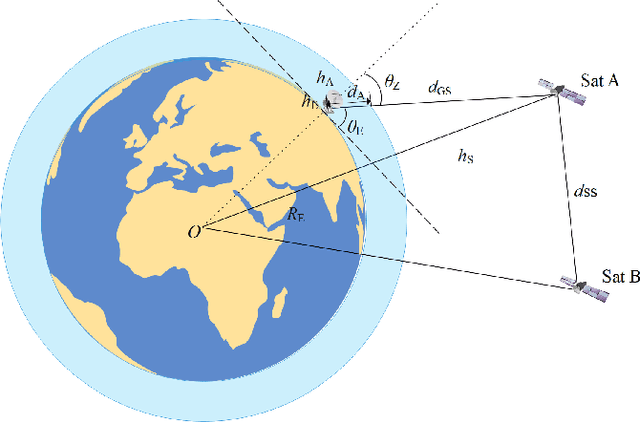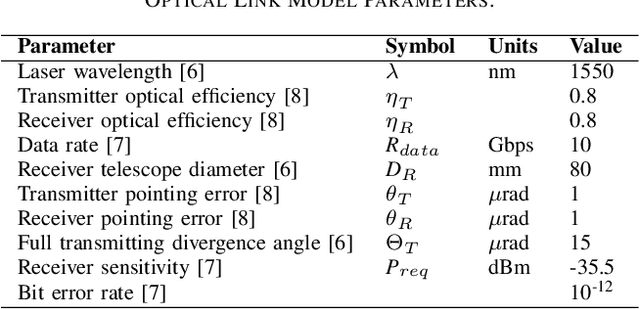Link Budget Analysis for Free-Space Optical Satellite Networks
Paper and Code
Apr 27, 2022



Free-space optical satellite networks (FSOSNs) will employ free-space optical links between satellites and between satellites and ground stations, and the link budget for optical inter-satellite links and optical uplink/downlink is analyzed in this paper. The satellites in these FSOSNs will have limited energy and thereby limited power, and we investigate the effect of link distance and link margin on optical inter-satellite link transmission power, and the effect of slant distance, elevation angle, and link margin on optical uplink/downlink transmission power. We model these optical links and compute the results for various parameters. We observe that the transmission power increases when the link distance increases for inter-satellite and uplink/downlink communications, while the transmission power decreases when the elevation angle increases for uplink/downlink transmission. We also observe an inverse relationship between link margin and link distance. Furthermore, we highlight some practical insights and design guidelines gained from this analysis.
 Add to Chrome
Add to Chrome Add to Firefox
Add to Firefox Add to Edge
Add to Edge